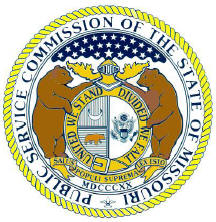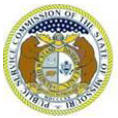COUNSEL
EVERGY MISSOURI WEST:
Karl Zobrist,
Dentons, 4520 Main Street, Suite 1100, Kansas City, Missouri 64111.
James M Fischer, Fischer & Dority, P.C., 101
Madison Street, Suite 400, Jefferson City, Missouri 65101.
Jacqueline Whipple, Dentons, 4520 Main Street, Suite 1100, Kansas City,
Missouri 64111.
Roger W Steiner, Evergy, P.O. Box 418679,1200 Main Street, 16th Floor, Kansas City, Missouri 64105-9679.
STAFF OF THE MISSOURI PUBLIC SERVICE COMMISSION:
Jeff Keevil, Deputy Counsel, Post Office Box 360, Governor Office Building, 200 Madison Street, Jefferson City, Missouri 65102.
OFFICE OF THE PUBLIC COUNSEL:
Lindsay
VanGerpen, Counsel, Post Office Box 2230, Jefferson City, Missouri 65102.
MIDWEST ENERGY CONSUMERS GROUP:
Tim Opitz, Opitz Law Firm, LLC, 308 E. High Street, Suite B101, Jefferson City, Missouri 65101.
NUCOR STEEL SEDALIA, LLC:
Marc H
Ellinger, Ellinger Law Firm, 308 E. High Street, Suite 300, Jefferson City, Missouri 65101.
VELVET TECH SERVICES, LLC:
Stephanie S Bell, Ellinger Law Firm, 308 E. High Street, Suite 300, Jefferson City, Missouri 65101.
SENIOR REGULATORY LAW JUDGE: John T. Clark
5

